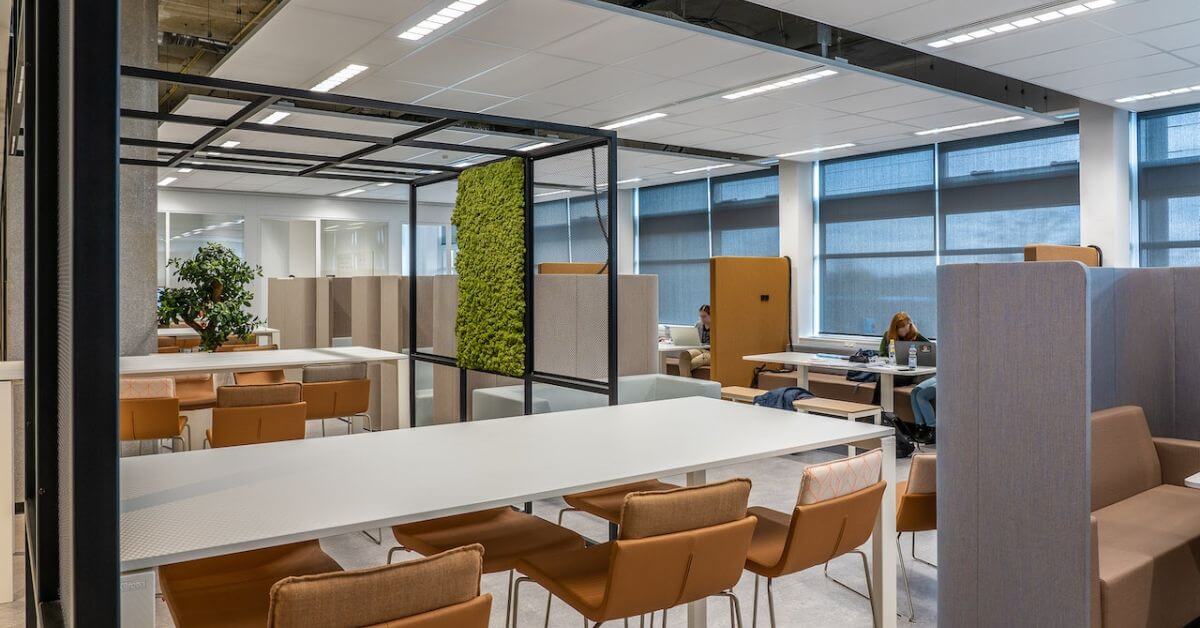As the boating season winds down, it’s essential to prepare your boat for storage properly. Neglecting this crucial step can lead to costly repairs and maintenance issues down the line. Whether you’re a seasoned boat owner or a novice, this guide will walk you through the essential steps to ensure your boat remains in excellent condition during its hibernation period.
Tag: Self Storage
Winterizing Your RV for Long-Term Storage
What Is Self Storage and How Does It Work?
Have you ever found yourself in a situation where your belongings seem to be taking over your living space? Whether you’re moving, decluttering, renovating, or simply looking for extra space to store your belongings, self-storage can be a practical solution. In this article, we’ll delve into the concept of self-storage, how it works, and why it might be the answer to your space-related dilemmas.
Understanding Self Storage
Self storage involves renting a designated space, such as a storage unit or locker, to keep your possessions safe and organized. These storage facilities come in various sizes, allowing you to choose the one that best suits your needs. Whether you’re a college student in need of summer storage or a family moving to a new home, self storage can provide a convenient way to manage your belongings.
How Does Self Storage Work?
- Choose a Facility: Begin by researching and selecting a reputable self storage facility in your area. Consider factors such as location, security features, and unit size options.
- Select a Unit: Once you’ve chosen a facility, pick a storage unit size that fits your requirements. Units can range from small closets to large garage-like spaces.
- Sign the Agreement: After selecting a unit, you’ll need to sign a rental agreement. This outlines the terms of your rental, including the monthly cost, access hours, and any additional fees.
- Transport Your Items: You’re responsible for moving your items to the storage unit. This gives you control over how your items are packed and organized.
- Secure Your Belongings: While your items are stored, you’re the only one with access to your unit. You can lock it with your own padlock for added security.
- Access as Needed: Most facilities allow you to access your unit during specified hours. This accessibility makes it convenient to retrieve or add items as necessary.
Choosing the Right Self Storage Unit
When selecting a storage unit, consider factors like the size of your items, the duration of storage, and any special requirements. It’s essential to choose a unit that provides enough space without overpaying for unused room.
Packing and Organizing Your Storage Space
Efficient packing is key to maximizing your storage unit. Use sturdy boxes, label them for easy identification, and create an aisle in the unit for access to all items.
Benefits of Self Storage
Self storage offers several advantages, including decluttering your home, providing a temporary space during a move, and offering a secure location for valuable items or equipment.
Security Measures in Self Storage Facilities
Reputable facilities implement security measures like surveillance cameras, gated access, and individual unit locks to ensure the safety of your belongings.
Tips for Making the Most of Your Self Storage
- Plan Ahead: Organize and pack your items strategically to optimize the space.
- Create an Inventory: Maintain a list of stored items to easily locate them later.
- Use Uniform Boxes: Uniformly sized boxes are easier to stack and arrange.
- Protect Fragile Items: Use proper packing materials to safeguard delicate belongings.
When to Consider Self Storage
Consider self storage when you’re:
- Moving to a new home or downsizing
- Renovating your current space
- Needing temporary storage during travel
- Requiring a space for seasonal items
Self Storage vs. Traditional Storage
Unlike traditional storage options, self storage allows you to access your belongings at your convenience and offers a wide range of unit sizes to choose from.
The Future of Self Storage
As urbanization continues and living spaces become smaller, the demand for self storage is expected to rise. Technology may also play a role in improving access and security.
Cost Considerations
Self storage costs vary based on factors like location, unit size, and duration of rental. While it might seem like an additional expense, the benefits often outweigh the cost.
Environmental Impact of Self Storage
Some self storage facilities prioritize eco-friendly practices, such as using solar power and implementing recycling programs, to reduce their environmental footprint.
Conclusion
Self storage provides a flexible and convenient solution for managing your belongings, whether you’re transitioning between homes or seeking extra space. By understanding how self storage works and making the most of the available options, you can declutter your living space and ensure the safety of your valuable possessions. If you’re in need of space, consider exploring the world of self storage today.
Workshop Innovation: Elevating Storage Facilities with Shop Spaces
In today’s rapidly evolving business landscape, innovation is the key to staying competitive and efficient. One area that has seen remarkable innovation is storage facilities, particularly with the integration of shop spaces. Gone are the days when storage facilities were mere static spaces used to stockpile goods. Modern businesses recognize that effective storage is not just about stacking items; it’s about optimizing processes and creating multifunctional spaces that add value. This realization has led to the integration of workshop spaces within storage facilities. This article explores how workshop innovation is transforming storage facilities, making them more versatile, functional, and optimized for modern business needs.
The Role of Storage Facilities in Business Operations
Storage facilities play a pivotal role in maintaining smooth business operations. They house raw materials, finished products, and equipment, ensuring a seamless supply chain. However, the conventional concept of storage often falls short in meeting the dynamic demands of today’s business environment.
Traditional Storage Challenges
Traditional storage facilities present several challenges. Limited accessibility, lack of organization, and underutilization of space are common issues. Additionally, the isolated nature of these spaces hinders collaboration and creativity among employees.
The Emergence of Workshop-Storage Hybrid Concept
The workshop-storage hybrid concept involves breaking down the barriers between storage and workspace. This innovation envisions a dynamic environment where employees can retrieve items and immediately engage in related tasks, fostering efficiency and agility.
Benefits of Integrating Shop Spaces in Storage Facilities
- Designing a Multifunctional Workspace: By integrating shop spaces, businesses create areas where employees can not only store items but also work on them directly. This reduces the need for back-and-forth movement, saving time and effort.
- Tools and Equipment Accessibility: With tools and equipment readily available in the same space, employees can swiftly transition from storage to production, minimizing downtime.
- Enhanced Collaboration and Creativity: The open layout of workshop-storage facilities promotes interaction among employees. This collaborative environment leads to innovative problem-solving and idea generation.
- Sustainability and Resource Optimization: Workshop spaces encourage the efficient use of resources. Materials can be repurposed or repaired on-site, reducing waste and contributing to sustainability goals.
- Security and Organization: Integrated storage and shop spaces are often better organized, reducing the chances of misplacement. Furthermore, controlled access enhances security.
Designing a Multifunctional Workspace
Design plays a crucial role in creating an effective workshop-storage facility. The layout should prioritize accessibility, safety, and workflow efficiency. Adequate lighting, ergonomic workstations, and clearly defined zones contribute to a productive environment.
Tools and Equipment Accessibility
In traditional setups, retrieving tools and equipment can be time-consuming. In workshop-storage hybrids, tools are within arm’s reach, minimizing interruptions and streamlining tasks.
Enhanced Collaboration and Creativity
The spatial design encourages spontaneous discussions and knowledge sharing among employees. This collaborative spirit fosters creativity and innovation, driving the company forward.
Sustainability and Resource Optimization
Workshop spaces allow businesses to extend the life of materials and equipment through repairs and repurposing. This sustainable approach aligns with eco-conscious initiatives.
Security and Organization
Integrating shop spaces with storage facilities enables better inventory management and reduces the risk of loss or theft. Access controls ensure that valuable items remain secure.
Future Trends in Workshop Storage
The workshop-storage concept is poised for further evolution. Automation and smart technologies will likely play a significant role, enhancing efficiency and data-driven decision-making.
 Steps to Transform Your Storage Facility with a Workshop Space
Steps to Transform Your Storage Facility with a Workshop Space
- Assessment: Evaluate your current storage setup and identify areas for improvement.
- Design: Plan a layout that balances storage needs with functional workspaces.
- Equipment: Procure the necessary tools and equipment for the workshop.
- Training: Train employees to use the new setup effectively and safely.
- Implementation: Gradually transition to the new setup to minimize disruptions.
Overcoming Implementation Challenges
While the benefits are clear, implementing workshop-storage innovation may face challenges like space constraints, initial investment, and resistance to change. Addressing these challenges with a strategic approach is crucial.
Conclusion
Workshop innovation is redefining how businesses approach storage. By combining storage and shop spaces, companies can unlock new levels of efficiency, collaboration, and creativity. The integration of tools, equipment, and workspace within the same environment streamlines operations and prepares businesses for a dynamic future.
Innovative Solutions: Exploring the Benefits of On-Site Office Spaces
As the landscape of business continues to evolve, innovative solutions are crucial to keep up with the changing dynamics. One such solution that has gained traction in recent times is the concept of on-site office spaces. Traditional office setups are gradually being replaced by innovative solutions that cater to the needs of the modern workforce. On-site office spaces, where employees work within the company premises, offer a plethora of advantages that contribute to a more efficient and dynamic work environment. In this article, we’ll delve into the various benefits that on-site office spaces offer to businesses, employees, and overall productivity.
Enhancing Collaboration and Communication
In an on-site office setup, employees are physically present in the same location, which naturally enhances face-to-face collaboration and communication. The proximity of team members fosters spontaneous discussions, brainstorming sessions, and quick problem-solving, leading to higher productivity and streamlined project outcomes.
Fostering Creativity and Innovation
The physical presence of diverse talents working together under one roof stimulates creativity and innovation. Sharing ideas in person often leads to the birth of novel concepts, as interactions become more fluid and multidisciplinary, ultimately driving the company’s competitive edge.
Boosting Employee Morale and Satisfaction
On-site office spaces provide employees with a sense of belonging and connectivity. The social interactions that occur during coffee breaks, lunchtime conversations, and team-building activities contribute to a positive work environment, boosting morale and overall job satisfaction.
Streamlining Project Management
Coordinating and managing projects become more efficient in on-site setups. Project managers can conduct face-to-face meetings, track progress, and address challenges promptly. This direct oversight minimizes delays and ensures projects stay on track.
Reducing Commuting Stress and Costs
Employees no longer have to endure long commutes, which can be stressful and time-consuming. By working on-site, they save both time and money, resulting in improved work-life balance and increased job commitment.
Creating a Distinct Company Culture
The physical workspace plays a vital role in shaping a company’s culture. An on-site office fosters a shared sense of identity and purpose among employees, promoting teamwork and aligning everyone with the company’s values.
 Increasing Security and Data Confidentiality
Increasing Security and Data Confidentiality
On-site office spaces offer greater control over security measures and data confidentiality. Companies can implement robust cybersecurity protocols and monitor physical access to sensitive information more effectively.
Balancing Work-Life Integration
Remote work can blur the boundaries between professional and personal life. On-site office setups help employees establish clear boundaries, allowing them to disconnect from work once they leave the office premises.
Eco-Friendly and Sustainable Practices
Consolidating employees into a single physical location reduces energy consumption and carbon emissions associated with remote work. On-site offices can implement eco-friendly practices more efficiently, contributing to a greener footprint.
Cost-Effectiveness and Resource Utilization
Optimizing resource utilization becomes easier in on-site setups. Companies can manage office space, equipment, and facilities more effectively, minimizing unnecessary expenses and ensuring efficient resource allocation.
Adapting to Hybrid Work Models
On-site office spaces can be adapted to accommodate hybrid work models, where employees split their time between working on-site and remotely. This flexibility provides the best of both worlds, catering to individual preferences.
Designing Ergonomic and Comfortable Workspaces
Physical office spaces allow companies to design ergonomic work environments that prioritize employee comfort and well-being. This, in turn, contributes to better focus, higher job satisfaction, and reduced workplace-related health issues.
Measuring and Improving Productivity
Tracking and evaluating employee productivity are more straightforward in on-site setups. Companies can gather real-time data, identify bottlenecks, and implement improvements based on direct observations.
Conclusion
Innovative solutions like on-site office spaces are reshaping the way we work. By fostering collaboration, enhancing creativity, boosting morale, and providing a structured work environment, businesses can unlock new levels of productivity and efficiency. As the business world continues to evolve, embracing these solutions can pave the way for a brighter and more successful future.


 Hull and Exterior Protection
Hull and Exterior Protection
 Steps to Winterize Your RV
Steps to Winterize Your RV


